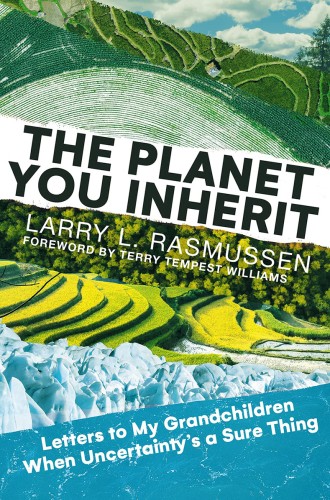Letters to Anthropocene kids
Ethicist Larry Rasmussen tells his grandchildren the truth about the earth’s peril—and calls them to embrace its beauty.
While I was reading The Planet You Inherit, the smoky haze from Canadian wildfires painted the skies of New York City and Washington, DC, an end-of-the-world-movie shade of red. Air quality warnings spanned from the northeast corner of the United States to St. Louis. “Basically, you can chew the air,” wrote Bill McKibben. “It’s Code Grim.” Massive environmental events like this are commonplace these days, but their commonness does not at all entail predictability. We live in an age when climate unpredictability is a certainty, and the certainty of climate unpredictability means that everything else in the future is, well, uncertain.
How might one think, live, and believe in a time of such uncertainty? Larry Rasmussen has been a leading voice in responding to that sort of question in the academy and the church for decades. Now he writes as one for whom “grandparenthood is fast approaching a full-time blessing.” This book is a collection of 22 letters that Rasmussen wrote to his young grandchildren between January 2018 and April 2021. Written to be read when the grandchildren are a bit older, these letters are an invitation to think with their grandpa about their life as “Anthropocene kids.”
And being Anthropocene kids will not be easy. Rasmussen does not shy away from speaking honestly to his grandkids about the dire challenges they will face. He risks, at times, coming off as a curmudgeon (his word!) because “the world is ‘too dangerous for anything but truth’” (here he is quoting William Sloane Coffin). The danger that looms largest throughout these letters is that the earth is being wounded under the burden of humanity, and we have not yet changed our habits to stop the damage. “We’re running Genesis backward,” he writes.





